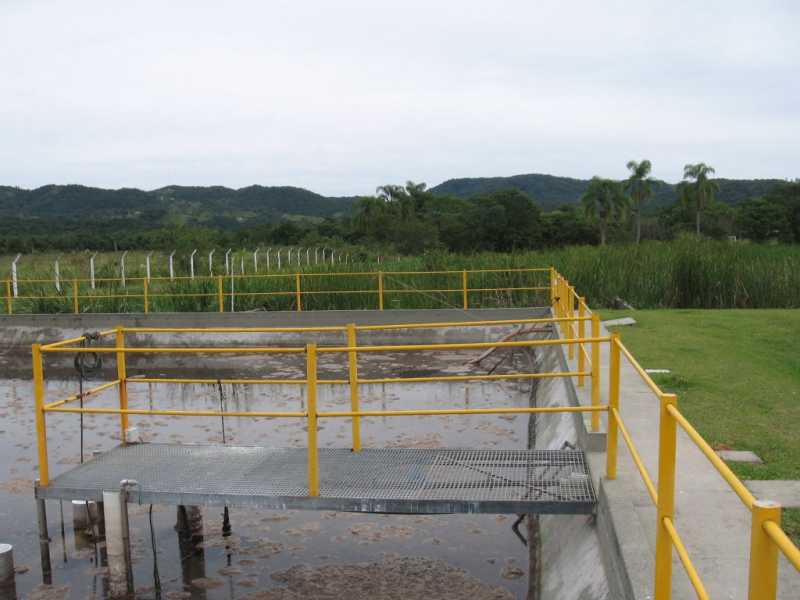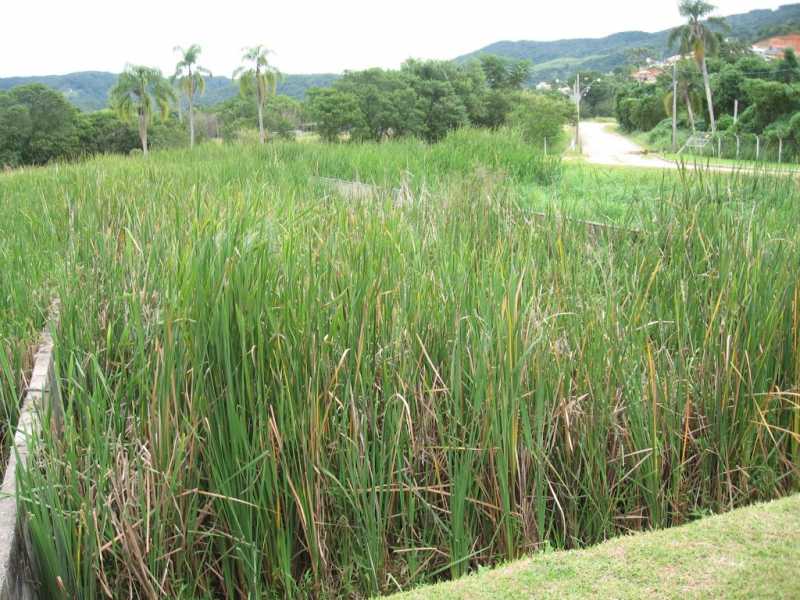- Forum
- categories
- Sanitation systems
- Faecal sludge management (FSM)
- Faecal sludge treatment technologies
- Sludge treatment in constructed wetlands
Sludge treatment in constructed wetlands
7130 views
Hi Christoph,
thanks a lot for your answer, very interesting!
Ok, for the terminology then, we meant the same. In Sandec they use to call that constructed wetlands for feacal sludge treatment. If I remember well, the CWs that were tested in Thailand for septage (thus partly digested fecal sludge) had around 50 cm filter depth and a freebord of 1 m for sludge accumulation.
Very true what you say on bad operation that quickly leads to spoil the reputation of a new technology... But of course that is not only true for SBM or CWs but for any (new) technology.
Good to learn that you have hands-on experience with that! I may contact you when I need more detailed help then
All the best,
Florian
thanks a lot for your answer, very interesting!
Ok, for the terminology then, we meant the same. In Sandec they use to call that constructed wetlands for feacal sludge treatment. If I remember well, the CWs that were tested in Thailand for septage (thus partly digested fecal sludge) had around 50 cm filter depth and a freebord of 1 m for sludge accumulation.
Very true what you say on bad operation that quickly leads to spoil the reputation of a new technology... But of course that is not only true for SBM or CWs but for any (new) technology.
Good to learn that you have hands-on experience with that! I may contact you when I need more detailed help then
All the best,
Florian
Please Log in to join the conversation.
You need to login to reply
Hi Florian,
I didn´t see your post. (somehow it seems that Is still do not know how to use this)
Sludge mineralization beds (SMB) (Klärschlammvererdung in German) are different from constructed wetlands (CW)(Pflanzenkläranlagen). They seem the same, but the design is TOTALLY different. (sorry if the next lines seem obvious to you but for the doubt I put them here).The design of CW is explained here www.susana.org/lang-en/library?view=ccbktypeitem&type=2&id=930. Basically: organic loading, hydraulic loading and oxygen balance are the key points. Main aim is to treat the effluent. In SMB the main aim is to treat and dehydrate the sludge, therefore the treatment efficiency of the effluent is not THAT important (although in Germany this is one important aspect, as the SMB reduces considerately the load for the treatment plant, by this reducing costs and treatment volume). So design for the SMB is mainly organic load … kg/m²,year (and not day as in CW). The possible organic load depends VERY much on the climate conditions and the type of sludge. Fecal sludge from septic tanks needs much lower loadings as sludge which comes from an aerobic treatment. Sludge from anaerobic treatment is somewhere in between in loading rates. In SMB the hydraulic aspect is almost (see almost) never an issue. Normally the SMB have an hight of only about 20 cm of sand and 1 m free board …to be able to store the sludge (see pictures attached).
You asked for the experiences in Brazil:
Doing a careful design and operating as proposed…PERFECT. I could not imagine anything which give you less headache and needs less operation. A very robust system and the interesting point is, at least in Brazil, with a very high turn over of the nature…. it does not seem to fill up.
And that is on the other hand the critical point. My clients are criticizing that my design is too large, needs to much space, others are copying now much smaller. The problem is I don´t know how small I could be as I´m not carrying out research. Another problem is, that the clients (who most often have sludge final deposition problems) see the SMB as a possibility to get rid of a problem on short hand. Some years ago I have been called to a system I designed. They filled it up to the rim in just 2 month (after establishing the plants) and were asking why the plants died. Seems funny? It is not. This client until today says he made some experiences with SMB and they do not work.
It is not. This client until today says he made some experiences with SMB and they do not work. 
So you don´t need to worry about the operation if you do it right, but overloading results in a very large stinking basin with a substance that can not be pumped nor removed by excavators.
I hope that explained my point. Feel free to ask if you need more explanation.
Yours
Christoph
I didn´t see your post. (somehow it seems that Is still do not know how to use this)
Sludge mineralization beds (SMB) (Klärschlammvererdung in German) are different from constructed wetlands (CW)(Pflanzenkläranlagen). They seem the same, but the design is TOTALLY different. (sorry if the next lines seem obvious to you but for the doubt I put them here).The design of CW is explained here www.susana.org/lang-en/library?view=ccbktypeitem&type=2&id=930. Basically: organic loading, hydraulic loading and oxygen balance are the key points. Main aim is to treat the effluent. In SMB the main aim is to treat and dehydrate the sludge, therefore the treatment efficiency of the effluent is not THAT important (although in Germany this is one important aspect, as the SMB reduces considerately the load for the treatment plant, by this reducing costs and treatment volume). So design for the SMB is mainly organic load … kg/m²,year (and not day as in CW). The possible organic load depends VERY much on the climate conditions and the type of sludge. Fecal sludge from septic tanks needs much lower loadings as sludge which comes from an aerobic treatment. Sludge from anaerobic treatment is somewhere in between in loading rates. In SMB the hydraulic aspect is almost (see almost) never an issue. Normally the SMB have an hight of only about 20 cm of sand and 1 m free board …to be able to store the sludge (see pictures attached).
You asked for the experiences in Brazil:
Doing a careful design and operating as proposed…PERFECT. I could not imagine anything which give you less headache and needs less operation. A very robust system and the interesting point is, at least in Brazil, with a very high turn over of the nature…. it does not seem to fill up.
And that is on the other hand the critical point. My clients are criticizing that my design is too large, needs to much space, others are copying now much smaller. The problem is I don´t know how small I could be as I´m not carrying out research. Another problem is, that the clients (who most often have sludge final deposition problems) see the SMB as a possibility to get rid of a problem on short hand. Some years ago I have been called to a system I designed. They filled it up to the rim in just 2 month (after establishing the plants) and were asking why the plants died. Seems funny?
So you don´t need to worry about the operation if you do it right, but overloading results in a very large stinking basin with a substance that can not be pumped nor removed by excavators.
I hope that explained my point. Feel free to ask if you need more explanation.
Yours
Christoph
Attachments:
-
 smallIMG_1730.jpg
(Filesize: 40KB)
smallIMG_1730.jpg
(Filesize: 40KB)
-
 smallIMG_1732.jpg
(Filesize: 74KB)
smallIMG_1732.jpg
(Filesize: 74KB)
Please Log in to join the conversation.
You need to login to reply
Hi,
I'd like to follow up on one comment made by Christoph Platzer in another discussion (on costs of ww treatment):
With sludge mineralisation beds, do you actually mean anything different than constructed wetlands?
As far as I know, vertical flow constructed wetlands, where sludge accumulates on the surface and is mineralised, and where plants maintain the hydraulic permeability of the filter (thus help avoid clogging) are considered as a good option for feacal sludge treatment. E.g Sandec has made several publications on this, mainly based on experience from Asia :
www.eawag.ch/forschung/sandec/publikationen/ewm/ewm_drying
Also I think that considerable experience exists in Europe (e.g. sludge mineralisation (Schlammvererdung) in Germany).
I'd be interested about your positive or negative experiences with this technology in Brazil or elsewhere.
Thanks, Florian
I'd like to follow up on one comment made by Christoph Platzer in another discussion (on costs of ww treatment):
...
Fecal sludge treatment cannot be done in a wetland (it would clogg) – it is possible in sludge mineralization beds but it has to be done very carefully and there is a lack of experience in proper design.
With sludge mineralisation beds, do you actually mean anything different than constructed wetlands?
As far as I know, vertical flow constructed wetlands, where sludge accumulates on the surface and is mineralised, and where plants maintain the hydraulic permeability of the filter (thus help avoid clogging) are considered as a good option for feacal sludge treatment. E.g Sandec has made several publications on this, mainly based on experience from Asia :
www.eawag.ch/forschung/sandec/publikationen/ewm/ewm_drying
Also I think that considerable experience exists in Europe (e.g. sludge mineralisation (Schlammvererdung) in Germany).
I'd be interested about your positive or negative experiences with this technology in Brazil or elsewhere.
Thanks, Florian
Please Log in to join the conversation.
You need to login to reply
Share this thread:
- Forum
- categories
- Sanitation systems
- Faecal sludge management (FSM)
- Faecal sludge treatment technologies
- Sludge treatment in constructed wetlands
Recently active users. Who else has been active?
Time to create page: 0.189 seconds








